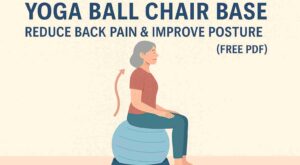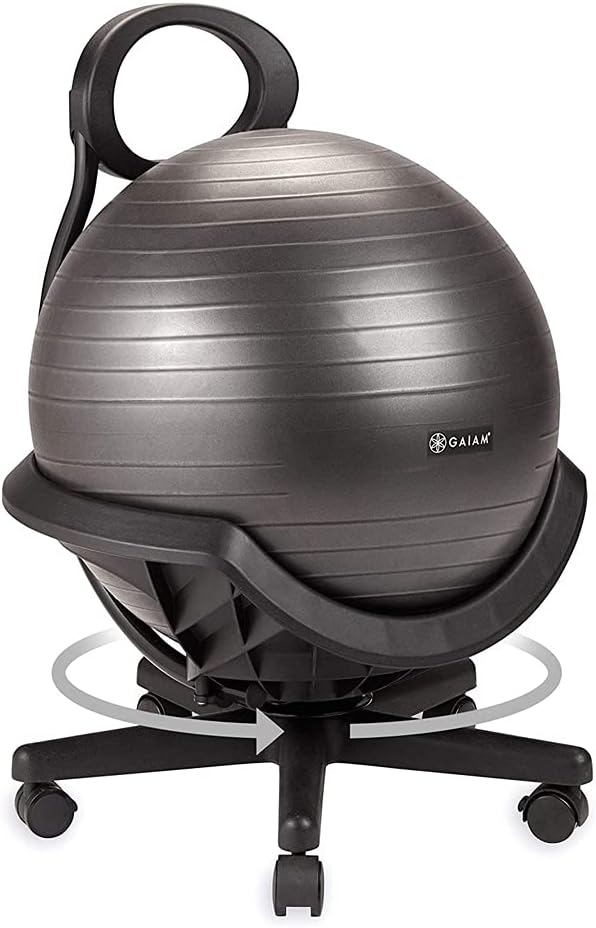But What is Somatic Yoga? At its core, somatic yoga integrates traditional yoga postures with somatic practices that emphasize internal sensations, self-awareness, and the connection between body and mind.
It encourages individuals to slow down, listen to their body, and respond to subtle cues. By doing so, practitioners develop a heightened sense of body awareness and release long-held tension patterns that may have built up due to stress, trauma, or repetitive movements.
Table of Contents
The Origins of Somatic Yoga
Somatic yoga has its roots in the field of somatics, a body-centered therapeutic approach developed by pioneers such as Thomas Hanna and Moshe Feldenkrais. These experts focused on re-educating the nervous system through gentle, mindful movements. The idea behind somatic practices is that the body holds onto trauma, stress, and habitual patterns, and by becoming aware of these, individuals can begin to release them.
Incorporating these principles into yoga gives rise to a deeply therapeutic practice that encourages self-inquiry and exploration. Unlike fast-paced yoga styles like Vinyasa or Ashtanga, somatic yoga is slow, mindful, and meditative, making it accessible to a wide range of individuals.
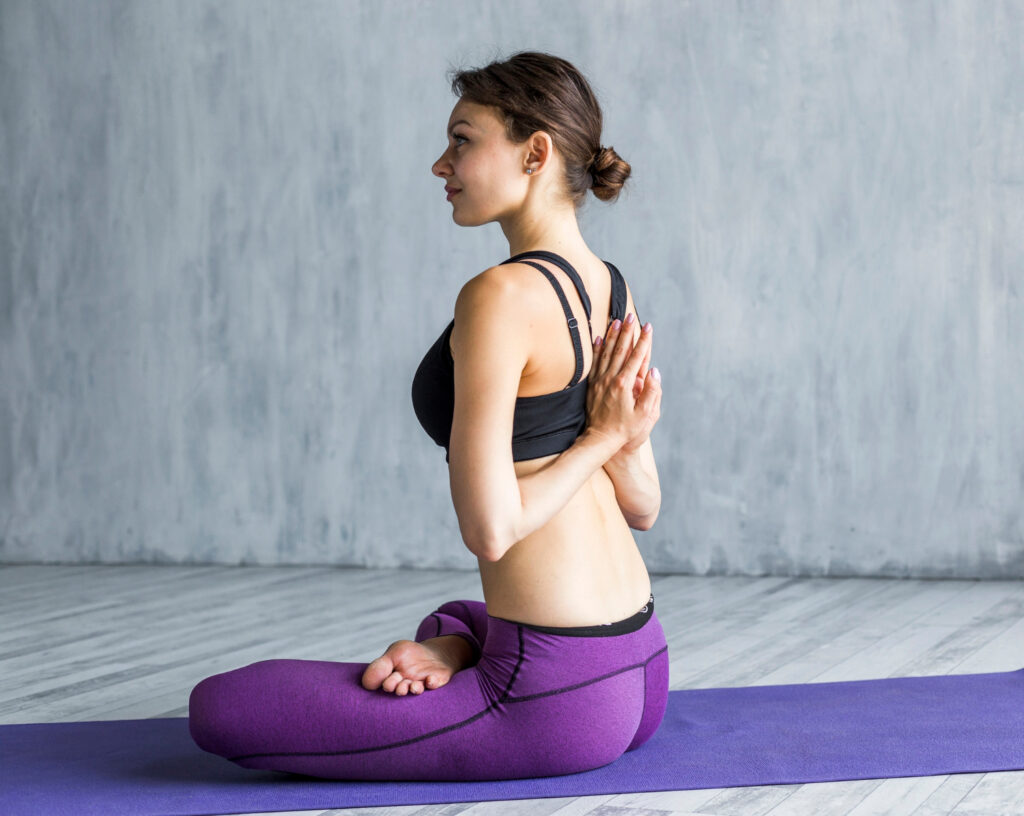
Benefits of Somatic Yoga
Somatic yoga offers numerous benefits, from physical relief to mental clarity.
1. Improved Body Awareness
Somatic yoga emphasizes tuning into bodily sensations, which increases overall body awareness. This heightened awareness helps individuals become more mindful of their posture, movements, and breathing patterns.
2. Stress Reduction
By encouraging relaxation and focusing on deep, mindful breathing, somatic yoga has been shown to reduce stress and anxiety. The gentle movements soothe the nervous system and can help break the cycle of chronic stress.
3. Relief from Chronic Pain
For those suffering from chronic pain, somatic yoga can be incredibly beneficial. The slow, mindful movements help release tension and recalibrate the nervous system, leading to reduced discomfort and improved mobility.
4. Emotional Healing
Somatic yoga goes beyond the physical body by addressing emotional and psychological blocks. Through mindful movement, individuals can release stored emotions, leading to a sense of emotional relief and balance.
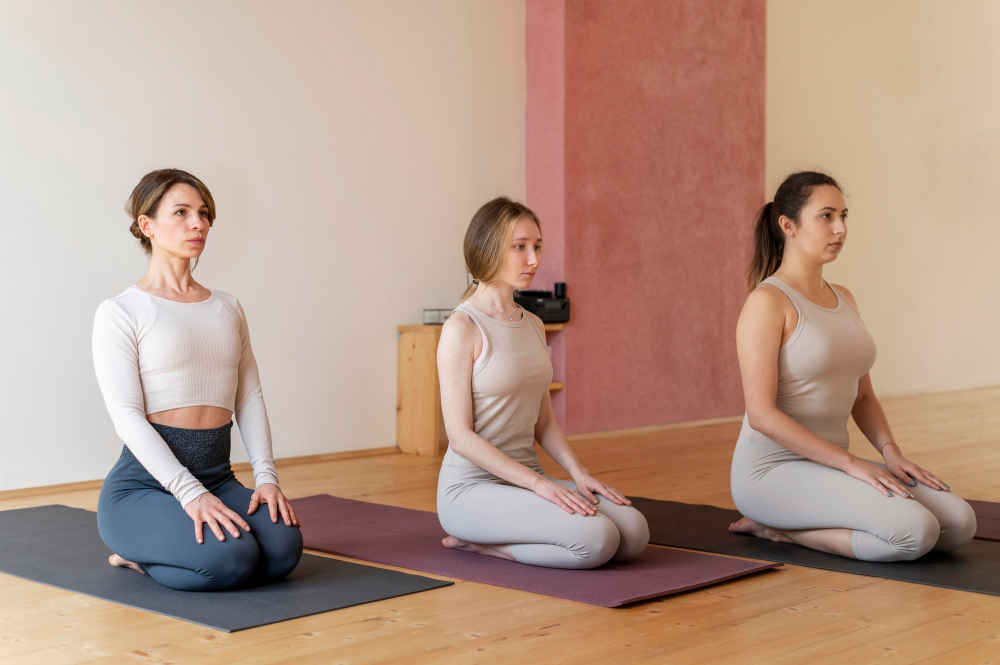
What is Somatic Yoga?- Therapy
Somatic yoga therapy is a therapeutic approach that integrates somatic practices with yoga to promote healing on multiple levels—physical, emotional, and mental. It is especially useful for individuals recovering from trauma, injury, or chronic stress. Practitioners of somatic yoga therapy guide individuals through gentle movements designed to reconnect them with their bodies and help them release stored tension.
In contrast to traditional therapy, which often focuses on verbal processing, somatic yoga therapy incorporates movement as a tool for healing. This makes it an excellent option for those who may find it difficult to verbalize their experiences or emotions.
Key Elements of Somatic Yoga Therapy:
- Gentle Movements: Slow, controlled movements help recalibrate the nervous system and release physical tension.
- Breath Awareness: Focusing on the breath helps regulate the body’s stress response and supports emotional balance.
- Mind-Body Connection: Encouraging awareness of how emotions manifest in the body fosters holistic healing.
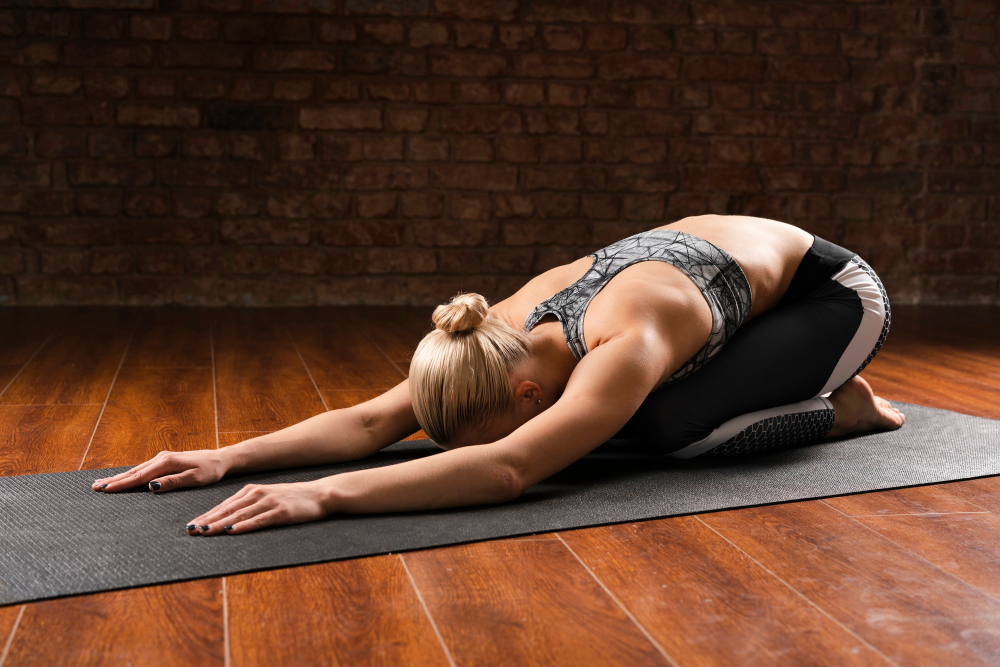
How Does Somatic Yoga Aid in Weight Loss?
When it comes to weight loss, somatic yoga may not be the first thing that comes to mind. However, it plays an important role in helping individuals achieve their weight loss goals by addressing the underlying stress and emotional factors that often contribute to weight gain. Here’s how somatic yoga for weight loss works:
1. Reduces Stress-Related Eating
By practicing somatic yoga, individuals learn how to manage their stress and emotions in healthier ways, reducing the likelihood of emotional or binge eating.
2. Improves Body Awareness
With heightened body awareness, practitioners of somatic yoga are more in tune with their body’s hunger and fullness signals. This mindfulness helps them make better food choices and avoid overeating.
3. Encourages Consistent Movement
While somatic yoga is not a high-intensity workout, it encourages consistent movement and mindfulness, which can complement other forms of exercise. Over time, the gentle practice can increase flexibility and strength, contributing to overall fitness and well-being.

What Are Somatic Yoga Techniques?
There are several key techniques used in somatic yoga that set it apart from other yoga styles. These techniques focus on creating a deeper connection between the body and mind:
1. Slow, Conscious Movements
Unlike fast-paced yoga practices, somatic yoga encourages slow, deliberate movements. This allows practitioners to tune into their body’s sensations and release tension gradually.
2. Sensory Awareness
One of the key aspects of somatic yoga is sensory awareness. Practitioners are encouraged to pay close attention to the sensations in their body, noticing where tension resides and how it shifts during the practice.
3. Breath Integration
Breathing is a central component of somatic yoga. Practitioners focus on deep, diaphragmatic breathing to calm the nervous system and support the body’s natural healing processes.
4. Self-Inquiry
Somatic yoga encourages self-inquiry, inviting practitioners to explore the relationship between their physical sensations and emotional or psychological states. This introspective approach fosters greater self-understanding and holistic healing.
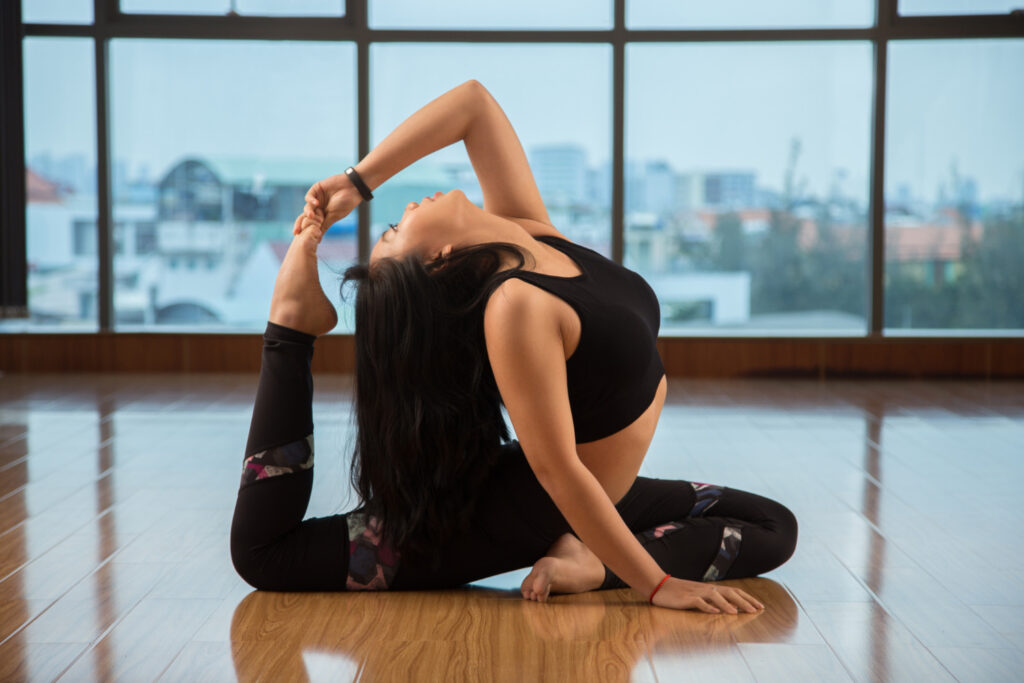
Somatic Yoga: What Is It Compared to Traditional Yoga?
So, What is Somatic Yoga, what is it exactly when compared to more traditional forms of yoga like Hatha or Vinyasa? The main difference lies in its emphasis on the internal experience rather than achieving perfect poses. Traditional yoga often focuses on physical alignment and strength, while somatic yoga emphasizes mindfulness, relaxation, and body awareness.
Additionally, somatic yoga tends to be much slower, allowing practitioners to explore how they feel in each pose rather than focusing on achieving a particular external form. This makes somatic yoga ideal for those who may find traditional yoga styles too physically demanding or those seeking a more meditative approach to movement.
Incorporating Somatic Yoga into Your Daily Routine
Incorporating somatic yoga into your daily routine is simple and highly beneficial. Here are a few tips on how to get started:
1. Start Small
You don’t need to dedicate hours to practicing somatic yoga. Even just 10–15 minutes of mindful movement can make a difference in how you feel physically and emotionally.
2. Focus on Breathing
Breathing is a fundamental aspect of somatic yoga. Begin each session by focusing on deep, diaphragmatic breathing to set the tone for a mindful and relaxed practice.
3. Pay Attention to Your Body
As you move through each pose, tune into how your body feels. Notice any areas of tension or discomfort, and use your breath to help release them.
4. Be Patient
Somatic yoga is about slowing down and tuning into your body’s needs. Be patient with yourself and allow the practice to unfold naturally, without forcing any movements or outcomes.
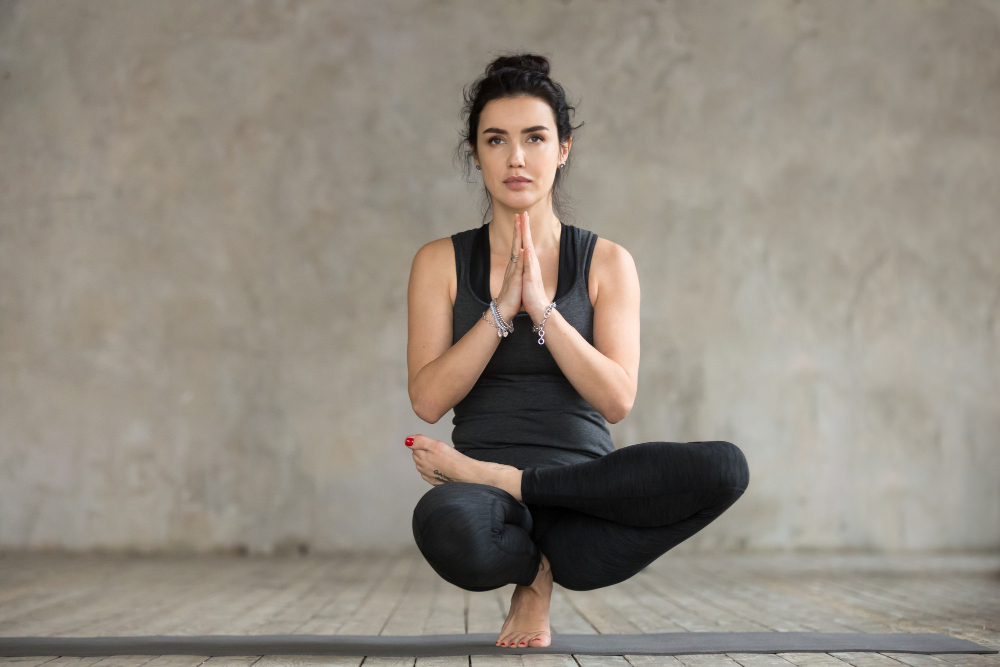
Conclusion of What is Somatic Yoga?
Somatic yoga offers a unique approach to healing that integrates mindfulness, movement, and self-awareness. It’s a powerful practice for anyone looking to reduce stress, release tension, and cultivate a deeper connection between the mind and body. Whether you’re seeking relief from chronic pain, emotional healing, or simply a more mindful way to move, somatic yoga can provide the tools you need to foster holistic wellness. By incorporating somatic yoga into your routine, you can begin to experience its many benefits and develop a greater sense of body awareness and emotional balance.
Incorporating somatic yoga techniques into your life can be a transformative experience, allowing you to engage with your body in a new and meaningful way. Whether through the practice of somatic yoga therapy or exploring its potential for weight loss, this practice encourages you to listen deeply to your body’s wisdom, leading to a more balanced and mindful life.
What Is the Best Diet for Someone with PCOS?
PCOS Yoga: Incredible Power of Yoga
Yoga-go.io genuine review
7 kirtan kriya benefits Incredible
Somatic Yoga Exercises PDF
50+ Printable Chair exercises for seniors
Horse Yoga Pose Step-by-Step
Dangers of Yin Yoga for People with (Osteoporosis)
Is kirtan kriya dangerous
20+ Spiritual Dangers of Yoga
Top 10 Somatic Yoga Exercises
20+ Hot Yin Yoga Essential Poses
What is Yin Yang Yoga
10+ Kundalini Yoga Kriyas







